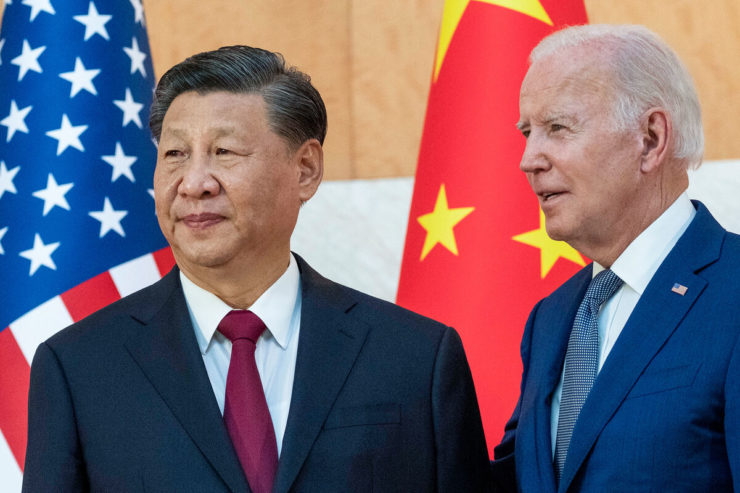
The recent US-China summit received a lot of media attention precisely because of the extremely volatile nature of global politics, especially in the context of the ongoing conflicts in Eastern Europe and the Middle East. Biden hailed the summit as a success, while China described it very positive. Military-to-military communications have resumed. But how much real progress towards a full-scale normalization was made, let alone achieving full-scale normalization? In other words, we should ask: to what extent Biden and Xi were able to find a common ground for resolving the real, contentious issues? While the fact that a summit was held in a good, positive atmosphere might be considered a positive development in itself, we might be nurturing a delusion if we conclude that this summit has potentially laid the path for anything substantial. In fact, nothing substantial, defined in terms of a mutual understanding, or a pact, regarding bilateral contentions issues – trade, Taiwan, South China Sea, etc. – was achieved. Therefore, if these issues remain frozen and resolved, we should conclude that no real progress was made towards summiting the peak of normalization.
In 2022, when Xi and Biden met in Bali, Indonesia, Biden had raised objections to China’s “coercive and increasingly aggressive actions toward Taiwan,” which he said undermined peace and stability across the Taiwan Strait and in the broader region, and jeopardized global prosperity. Nothing changed in 2023. As The White House readout of the meeting said,
“On Taiwan, President Biden emphasized that our one China policy has not changed and has been consistent across decades and administrations. He reiterated that the United States opposes any unilateral changes to the status quo from either side, that we expect cross-strait differences to be resolved by peaceful means, and that the world has an interest in peace and stability in the Taiwan Strait”.
Xi, on the contrary, did not forget to reiterate that “the Taiwan question remains the most important and most sensitive issue in China-U.S. relations”, one that does need resolution, without which a durable transition to normalization might remain a distant possibility and without which mutual confidence may not be possible. Xi, therefore, appeared adamant when he said that “China will realize reunification, and this is unstoppable.” It shows the critical gap that continues to exist between the US and China. It also shows that the US-China continue to lack enough confidence in each other’s policies.
This is most clearly visible in the 40 percent drop in China’s US Treasury holdings. While this will strengthen the Chinese Yuan, it will also do damage to the US market/currency. It means that if the Chinese continue to sell, any resultant market instability would become yet another issue between the two countries.
If China lacks confidence in the US, so does the US. It is for this reason that the US is edging close to deploying long-range, land-based missiles to deter a potential Chinese invasion of land to realize what China thinks is the inevitable reunification. The US General Charles Flynn, Commander of US Army Forces Pacific, stated at the Halifax International Security Forum in Nova Scotia, that the US will deploy new intermediate-range missiles including Tomahawks and SM-6s to the Pacific region in 2024.
This deployment not only reflects that the US expects no normalization with China in the long or short run, it also shows a strategic shift in Washington’s Pacific policy. What is being called the US “missile wall” in the Pacific, or the coming of the “missile age”, in the Pacific not only shows how fast tensions are rising but also how deep the differences remain. Not a single brick fell from this “wall” after the summit. What is facilitating this “wall”, on the other hand, is the US withdrawal from the INF Treaty in 2019. Back then, the US cited Russian non-compliance, but Washington is now using the opening to militarize the Pacific against China, showing how Washington simply does not believe in Xi’s frequently given statements that China is not looking for an actual war with any country. For Washington, this is just empty rhetoric that means nothing substantial.
The stalemate, in other words, remains there, and is simply unlikely to disappear because the two leaders had a nice meeting in San Francisco! The underlying reason for this is simple: the US and China are the world’s biggest economic and military powers competing for influence. The nature of this competition is different from a competition between two long-standing powers. Here, we have one country, the US, that has been dominating global politics for over half a century. On the other hand, we have China that has emerged as a superpower relatively recently. China has quickly become one country that can truly challenge the unilateral dominance of the US. For the US, therefore, China is – and will remain – the natural enemy, both economically and militarily.
It is for this very reason that the US sees China, as outlined in the 2022 Indo-Pacific Strategy, as a country that is actively “combining its economic, diplomatic, military, and technological might as it pursues a sphere of influence in the Indo-Pacific and seeks to become the world’s most influential power. The PRC’s coercion and aggression spans the globe, but it is most acute in the Indo-Pacific”. That assessment about China has not changed, which is why the overall US approach to China, or China’s approach towards the US in the context of the US calculation about China, has not changed either. The peak, therefore, remains to be summited, and how that might eventually happen, too, remains to be seen.
Salman Rafi Sheikh, research-analyst of International Relations and Pakistan’s foreign and domestic affairs, exclusively for the online magazine “New Eastern Outlook”.
